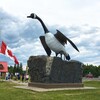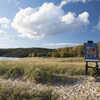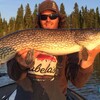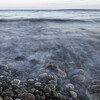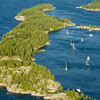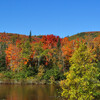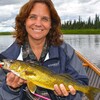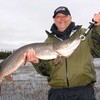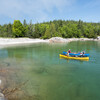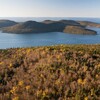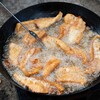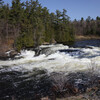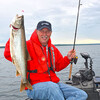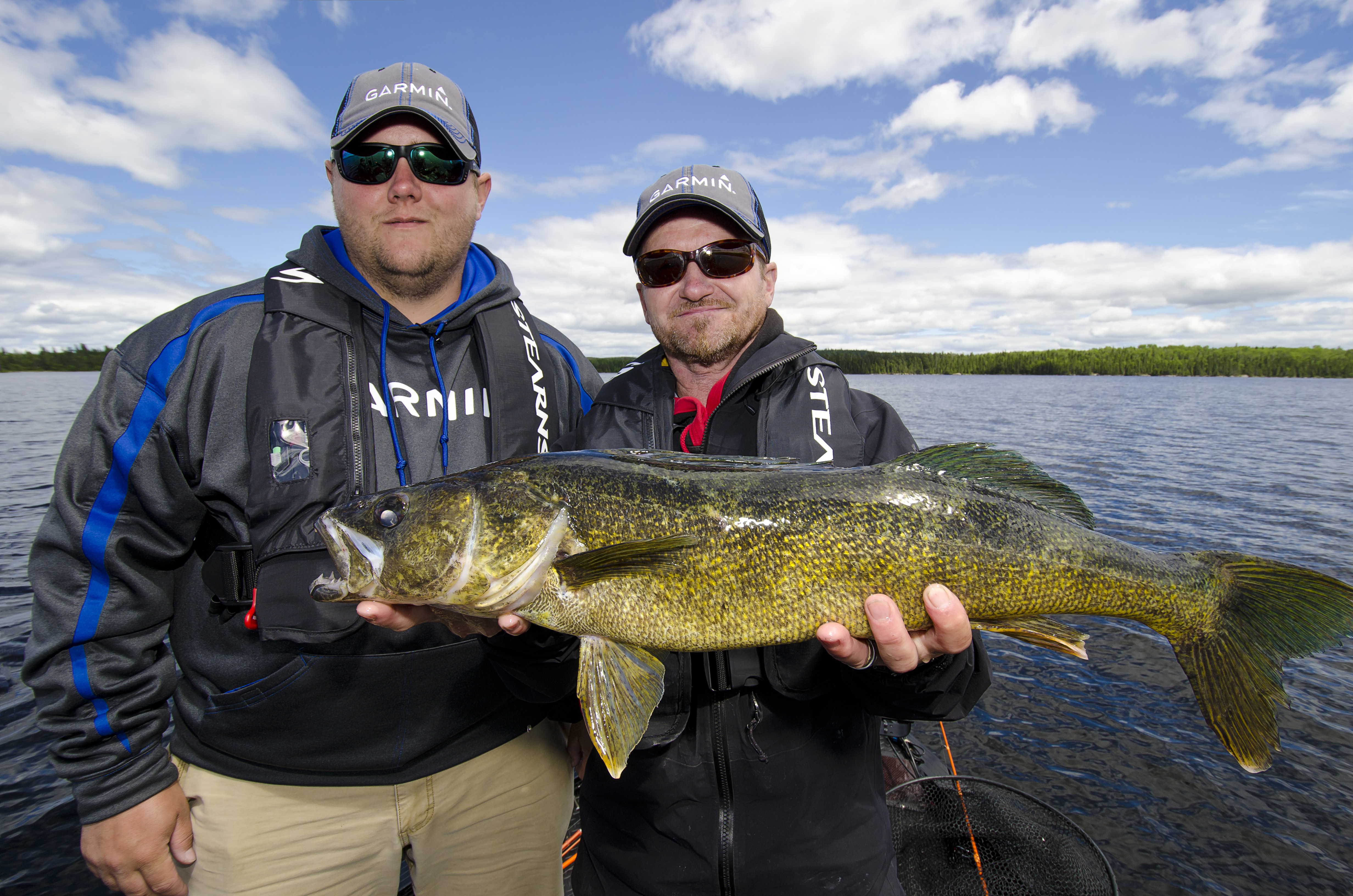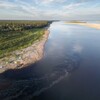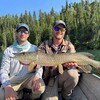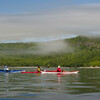
Fishin’ in the Salad
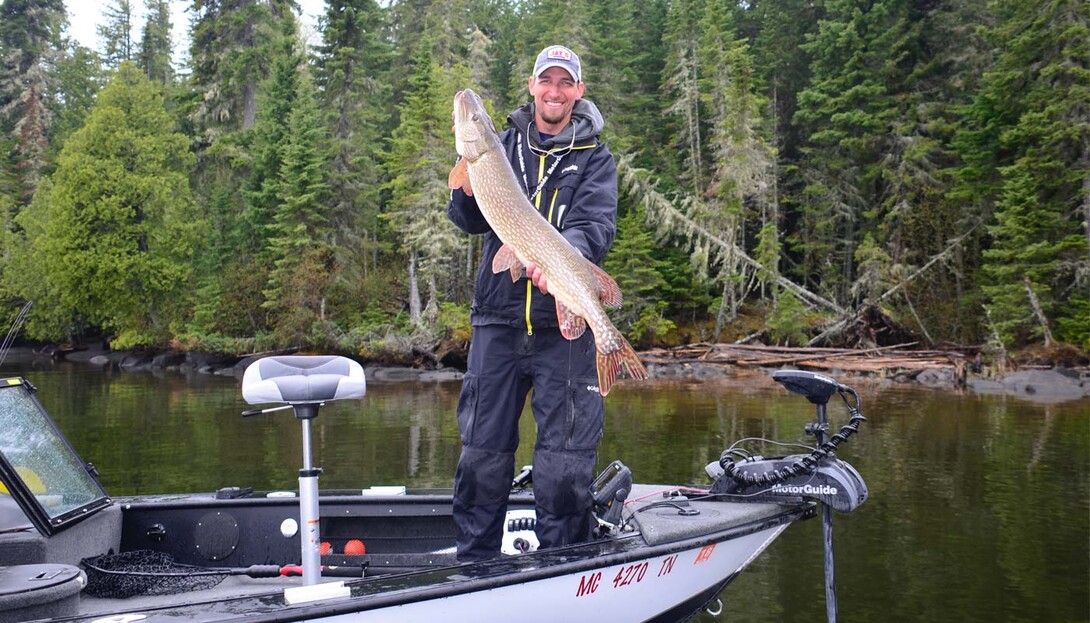
Aquatic weed growth can either be viewed as an "angler's blessing" or an "angling nightmare" depending on how this common fishing scenario is approached. Across Ontario's Algoma Country how an angler approaches the idea of fishing among aquatic weed cover ultimately plays a huge role in fishing success or failure.
Most of the time when anglers come away swearing at the aquatic weeds, they came to the party with the wrong gear and the wrong attitude to succeed when fishing in the jungle. Embracing aquatic weeds as fish holding cover and learning how to fish this vegetation effectively is the best way to make the most of every Algoma Country fishing trip.
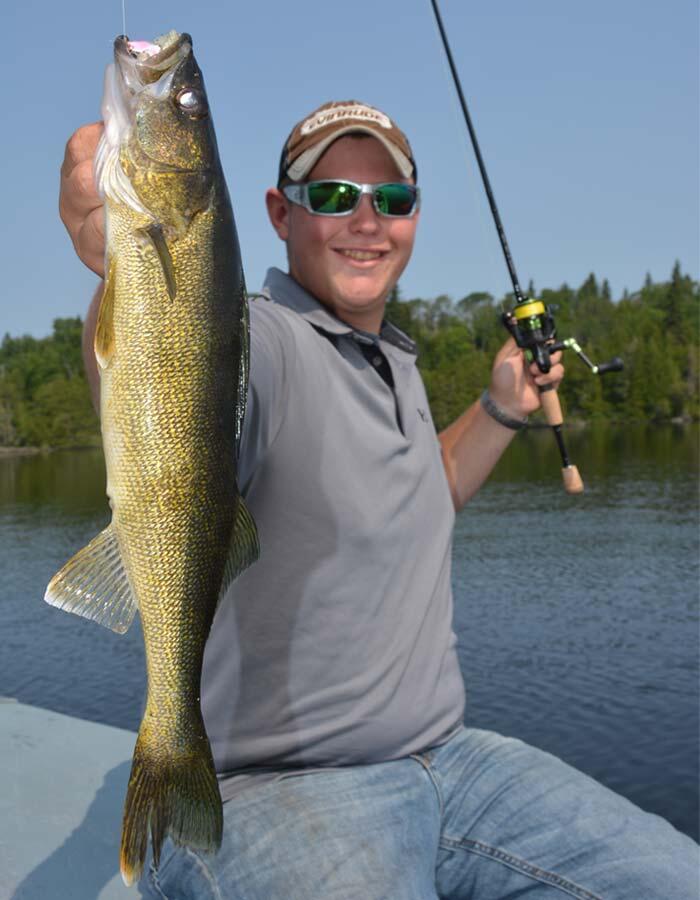
Pike Fishing in the Weeds
Most of the time when anglers think about fishing in weed cover their thoughts are zeroing in on northern pike. It's true that pike are often found lurking in or near lots of different types of weed cover. Pike hang out in both emergent weeds like cattail, bullrush and water lily, but they are just as prone to using submerged weeds like common pondweed and coontail.
Both emergent and submerged weed types have their appeal to pike and also their challenges to fishing. In general emergent weed types are more challenging to fish because not only does the angler have to deal with the weed growth above the surface, a lot of dead and dying vegetation also enters the picture below the surface.
In early spring northern pike are routinely found in stands of cattail and bullrush that have been beaten down by winter weather. Typically these weeds grow in water from a few inches to about 4 or 5 feet deep. The dead cane tends to lay over on the surface creating a fishing situation that's difficult to penetrate with traditional fishing tackle.
Fishing any lure with an exposed hook is pretty much out of the question when targeting this kind of emergent vegetation. Weedless lures like the famous Johnson Silver Minnow Spoon come to mind, but this bait actually works best when fished in areas that have more water than weeds! Experience has taught me that when targeting pike in lay-down weed situations a weightless Texas rigged soft plastic swimbait body works better.

This simple rig is ideal for pitching into openings in the weed growth and allowing it to sink slowly to bottom. Twitching the bait with the rod tip to bring it to life routinely gets northern pike to suck the bait deep into their throat.
An offset bend worm hook is required for this kind of fishing. It's important to match up the hook size to the size of plastic bait being fished. If the hook is too small, lots of fish are going to bite, but ultimately get missed during the hook set. A good selection of worm hooks from 1/0 to 5/0 inches in size are required to fish the most common swimbait bodies.
Targeting pike in more mainstream submerged weed cover calls for using lures that are designed to cover lots of water quickly. Traditional baits like oversized spinnerbaits, weedless in-line spinners and weedless spoons are good choices. Classic weedless lures shine best in situations where weed cover is present, but there is room to work these lures without constantly fouling.
Walleye in the Weeds
Many anglers consider walleye a creature of hard bottom and rock-strewn areas. Actually, a grain of truth rings true in the idea that walleye favor hard bottom areas. However, walleye are adaptable creatures and also turn up in areas where classic hard bottom structure and soft bottom weed flats meet. These "transitional" areas often concentrate the largest numbers of walleye and should not be overlooked by anglers.
Learning how to target walleye in the weeds is an important step for any angler who spends a lot of time fishing in Ontario's Algoma Country. Often all it takes to be effective in targeting walleye in the weeds is to modify existing mainstream fishing techniques to be more efficient when fishing in weed cover.
Case in point, jig fishing dominates the walleye fishing scene all across Algoma Country. Ball head jigs tipped with minnows are the most popular choice among local and visiting anglers. Ball jigs are popular among walleye anglers, but this jig design is not very efficient when it comes to fishing in weed cover.
Switching to a wedge-shaped jighead that features a 60-degree eye tie (eye tie comes out the nose of the jig instead of the top of the jig) makes it much more efficient to work a jig in weed cover without fouling. Often the best weed jigs are stand-up style or modified stand-up jigs that are designed especially for pitching into scattered weed patches.
The Bait Rigs Long Shank Slo-Poke and original Slo-Poke jigs (www.baitrigs.com) are perfect examples of jigs designed especially for walleye fishing in the weeds. The most popular jig sizes for weed pitching are 1/16-, 1/8- and 1/4-ounce models.
Weed pitching can be accomplished with traditional live baits like minnows or leeches, but soft plastic grub bodies stay on the hook better creating a much more efficient fishing presentation. The best plastics for weed fishing are high action types including three-inch shad bodies and twister tails. Both the Long Shank and original Slo-Poke jigs are designed to accept soft plastics.
Concentrating on the Edges
When fishing pike and also walleye in the salad, it's often best to identify the natural edges that form between weed cover and open water. Fishing these transitional edges an angler can be highly efficient at contacting fish while at the same time keeping fouling to a minimum.
Summing It Up
Fishing in weed cover is for sure more work than fishing in open water. To be effective fishing in both emergent and submerged weed cover anglers have to come prepared with the right attitude and gear. Despite the frustrations of fishing in the salad, anglers who embrace aquatic weeds as fish-holding cover are on the fast track to fishing success.
Recommended Articles
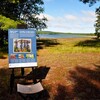
The Group of Seven in Algoma

9 Facts to Know about the Agawa Canyon Tour Train
